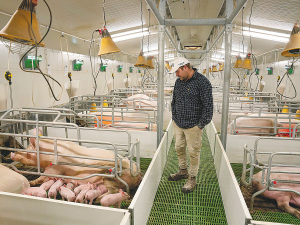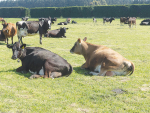A controversial new welfare draft code is triggering vigorous debate between pig farmers and animal welfare advocated as to what the best path forward is.
The main proposals in the Government's new draft code, which has farmers up in arms, surrounding new rules around farrowing crates. Previously these were allowed from 5 days before birth to 28 days after. This will now be restricted to only 72 hours after birth or banned outright, while farrowing pens will have to have a minimum space of 6.5m2.
Farmers claim this will put them at a massive disadvantage, going well beyond any other countries requirements and commercially destroying New Zealand pig farming. However, animal activists claim it is a necessary step to bring animal welfare up to matching New Zealand's reputation for high standards.
The story traces back to 2020, when the New Zealand Animal Law Association (NZALA) and SAFE took the Government to court over its failure to phase out farrowing crates in New Zealand. The Government had taken steps towards outlawing these in 2015 but had since gone cold on the idea.
The High Court ruled in favour of the animal activists, saying that farrowing crates breached the Animal Welfare Act 1999 and that the Government had to consider new regulations regarding the welfare of pigs.
Brent Kleiss, chief executive of NZ Pork, told Rural News that his organisation believes the Government is making grand overtures to look like they are acting without thinking through the practical applications. He claims that consultations with pig farmers were one-way in nature with several aspects being complete surprises to farmers upon the draft's release.
"We share serious concerns with qualified experts that the scientific approach to the code is careless; this includes what looks like cherrypicking of science publications to support predetermined positions."
There are arguments on both sides of the crate debate Multiple studies have shown that crates lower the risk of piglet mortality by crushing and - due to the large number of piglets per litter - sows are less concerned with individual survival, contrary to farmers' goals. Sweden, Switzerland and Norway - which have banned farrowing crates - have a similar if not slightly higher rate of piglet mortality than most other comparable countries. On the other hand, confined sows have higher rates of stillbirth than free farrow, with half of piglet deaths occurring in the first four days after birth, meaning the effectiveness of farrowing crates has diminishing returns past that date.
However, confinement during prolonged farrowing has been shown to reduce levels of oxytocin in pigs' plasma, resulting in reduced mothering instincts for sows and lower vitality and survival rate for piglets in farrowing crates.
NZALA president Saar Cohen told Rural News that the challenge is to find a lawful way to minimise piglet mortality - without turning sows into 'breeding machines'.
"The solution will need to come from pig experts, not those whose profit depends on litter size."
Kleiss says that the duration of sow confinement could be reduced 80% without negatively impacting piglet welfare. He adds that while increased space available for pigs is a reasonable demand, the degree of expansion is wholly unsuitable.
"No explanation has been given as to why a minimum size of 6.5m2 was chosen."
He suggests that more quality of life improvements - such as manipulable materials and retreat areas - would make implementing welfare changes easier.
Ministry for Primary Industries economic analysis predicts that with the draft space increases and transitioning to either of the proposed new systems, it would take 16-19 years to cover the costs of implementing these changes. It says it would reduce earnings for a 350 sow farm from $381,000 to $184,000 - a whopping 51.7% loss. This is on top of productivity being lowered, due to 50% increased pre-weaning mortality.
All of this is expected to increase the price of New Zealand pork by 18.2-18.8%.
Both NZ Pork and NZALA have expressed concerns about Kiwis turning aways from New Zealand product to foreign pork, which will have to undergo the same rigorous standards in place here. Many foreign pork producers have worse standards than our current benchmarks.
Cohen says NZALA shares NZ Pork's concerns about low welfare imports and believe incorrect advice has come from Government about the ability to ban or limit these foreign pork imports.
"Low welfare imports can be banned domestically and defended internationally, with some leadership and proactive approach to animal welfare," he told Rural News. "We would like to offer NZ Pork the expertise of our International Trade Law experts to ensure Kiwi farmers are not discriminated against by having to comply with higher welfare legislation."
Cohen claims that most of the imported pork comes to NZ from the EU, which is already banning some low welfare imports into its own area.
"At present, there is little political appetite to do the same over here, but that could change with a bit of help from NZALA and NZ Pork," he adds. "We should work together on this important topic."



















